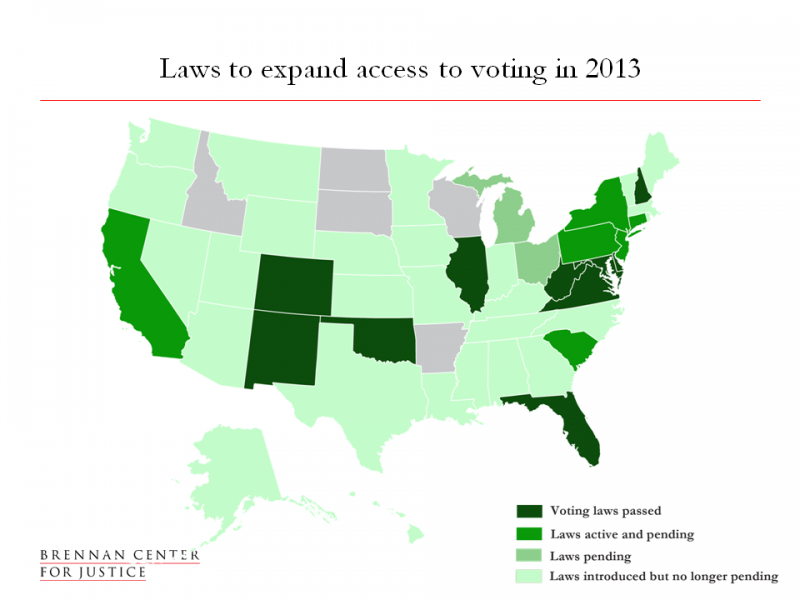Most people expected youth turnout to decline in 2012. Signs of diminished enthusiasm
were hard to miss. For instance, the Pew Research Center reported that just 28% of
young people were following the election closely, down from 40% at the same point
four years ago.
My organization, CIRCLE, asked a random sample of young Americans whether Barack Obama or Mitt Romney was
a "typical politician." The largest group, 36%, said "both." Another 19% chose President Obama alone. That means
that an outright majority of young people saw the President as a typical politician, not as an inspirational leader,
as they might have said in 2008.
But young people (18-29) actually turned out at almost exactly the same rate this year as they had in 2008: 50%. They
preferred Barack Obama by a lopsided 23-point margin and were numerous enough to determine the outcome of the
campaign. If Governor Romney had drawn half of the youth vote in Florida, Ohio, Pennsylvania, and Virginia, he would
have won their 80 electoral votes and would now be president.
Since young people voted at the same rate in 2012 despite showing less enthusiasm than four years ago, I think we
can conclude that they weren't moved by excitement or hope as much as by commitment and persistence. That
is good news because we should want young people of all backgrounds and ideologies to participate in civic life,
by voting and also by serving in their communities, following the news, discussing issues, and informing themselves.
Civic participation is a habit formed during youth, so the future of our democracy depends on engaging young people
today. From that perspective, the increase in youth turnout is heartening, and it's good news that young people have
amassed political power by voting–that means that the parties, interest groups, and the news media will compete to
engage, persuade, and educate young people.
But fifty percent turnout is still not impressive. The United States routinely posts the lowest voter turnout rates of any
true democracy in the world, and young Americans lag 15 points or more behind older Americans in voting. Also, the "new normal" of massive youth voting is in some ways just a return to the "old normal." In seven of the 10 elections
since 1976, youth turnout has been just about 50%. One way to read the trend is to say that youth turnout is stuck at
about half of eligible young citizens.
Equally stubborn are disparities in voting by social class. Whereas young people with some college experience voted
at a rate of about 63% this November, the turnout of non-college-educated young people was just 36%. Those
non-voters were diverse ideologically and included a substantial proportion who liked Mitt Romney better than Barack
Obama. But they failed to vote for any candidate.
The whole infrastructure of churches, grassroots political parties, local newspapers, and unions that once introduced
working-class young people to politics is now shattered. And the sophisticated turnout operations of modern presidential
campaigns focus on likely voters, meaning that college campuses get lots of attention but no one reaches young
people who work in retail, service industries, and manufacturing. The hyper-efficient Obama campaign contacted just
5.8% of youth without college experience.
Young voters are back. They turn out in good years and bad and make the difference in close elections. But half of
our young people are still non-voters, and their detachment from politics reflects their general alienation from civic life.
We can't be satisfied until we reengage them.
Peter Levine is Lincoln Filene Professor of Citizenship & Public Affairs and Director of CIRCLE: the Center for Information &
Research on Civic Learning & Engagement at Tufts University's Jonathan M. Tisch College of Citizenship and Public
Service.








